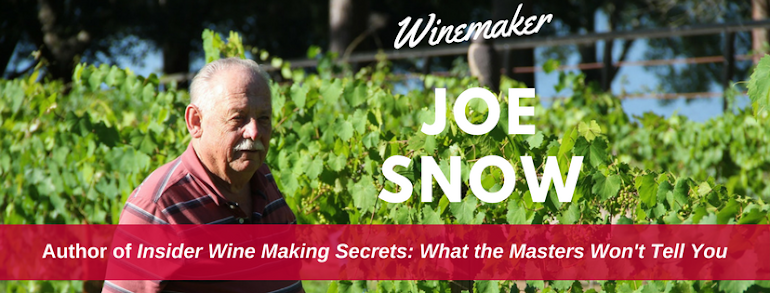Someone asked me to post the most common mistakes while making homemade wine.
So here they are.
5 Common Mistakes You Can Make When Making Wine And How To Avoid Them
Mistake Number One
Not sanitizing ALL wine making equipment and utensils
Not properly
sanitizing your wine making equipment prior to beginning and during the wine
making process can lead to catastrophic results. The most common symptom of a
wine that was made under less than sanitary conditions is a wine that has a bad
taste or an unpleasant odor, even worse the wine may have to be dumped. I have
read that up to 90 percent of all wine failures are due to the lack of good
sanitation practices. Sanitation is NOT the same thing as sterilization in fact
we really do not want to have sterilized fermenters when making wine. Sanitizing
is the reducing or removing of bacteria and other undesirable microorganisms; whereas
sterilization kills everything.
Sodium Metabisulfite works well as a sanitizer for
your wine making equipment. Use 2 oz. to 1 gallon of water. It is also
reuseable, just sanitize, and then put it back in the container. I use a one
gallon glass jug with a screw-on cap to contain the liquid sanitizer. Here is
an example, pour a small amount into a carboy and roll it around and up an down
until all of the interior surface has been coated then pour the left over
sanitizer back into the original glass jug to use again.
Sanitation is an
important step in winemaking. Just practice following the instructions. Clean
and sanitize your equipment before you start to make wine. Clean and sanitize
your equipment after you are through using the equipment. Store your sanitized
equipment in a bug and dust free environment. Clean and sanitize the equipment
again before using. Mistake avoided!
Mistake Number Two
Adding too much or too little sugar
Adding too much or too little sugar to your
wine “must” can have undesirable effects on your finished product. When fermentation occurs the wine
yeast is consuming sugar and turning it
into alcohol. So the amount of sugar that is available to the wine yeast
controls how much alcohol that can be made. However, it is possible to have too
much sugar in a must during fermentation. Too much sugar adversely affects the
fermentation process and begins to act as a preservative as opposed to being
food for yeast. This will have a tendency to choke out the yeast and
fermentation may not start. That is why if you are not familiar with the use of
your hydrometer to check the sugar content of the must and make calculated adjustments,
you should adhere to your trusted recipe without making experimental changes.
Adding too little
sugar will literally starve the yeast to death and produce very little alcohol
content leaving you with little more than fruit juice as opposed to wine.
There are several
different wine yeasts from which to choose. Most will produce between 10 and 13
percent alcohol with the right amount of sugar. There are some that are
formulated to produce more. There is a fine line one should not cross between
the proper amount of sugar and the kind of yeast being used.
Mistake Number Three
Using the wrong yeast
There are many wine making instructions on
how to make homemade wine on the internet. Many of them are not giving good
advice on how to properly make good wine resulting in a poor
excuse for wine. Some of the instructions are down right dangerous and should
be avoided. I wrote about some of them in my book. Some are advocating the use
of yeast never intended for wine. For example, some suggest using bakers yeast.
And some suggest that using brewers yeast will work for wine. This is all well
and good if you want your wine to have a hint of homemade bread or dinner rolls
in its taste, or wine that tastes like it has been mixed with beer. I didn’t
think so. Yeasts are formulated to work with certain processes, baking, making
beer, and wine making, to name the most notable. When baking, use bakers yeast.
When making beer, use brewers yeast. When making wine, use wine yeast. Always
pick your yeast for what it was designed for. Most fruit contain naturally
occurring yeast and it is possible to produce some semblance of wine with its
use. But, it is a far cry from being good wine. In fact, when we make wine we
go to great lengths to kill the natural yeast and bacteria within the batch. We
then add our wine yeast after waiting 24 hours for the additive (campden) to
become ineffective.
Mistake Number Four
Leaving wine in primary fermentation too long
Primary fermentation usually takes between
three to seven days to complete. It goes by much more quickly than secondary
fermentation because wine must is a much more fertile environment for the
yeast. Sugar and oxygen levels are high during primary fermentation and there
are plenty of nutrients. A happy and healthy yeast population can really
consume sugar at a rapid rate in an environment like this. As fermentation
progresses the oxygen runs out, the sugar and nutrient levels drop, and alcohol
starts to build up. This slows fermentation down. A blanket of carbon monoxide
forms on top of the must that keeps oxygen at bay. But the slowing of
fermentation means less CO2 is generated for the blanket. There are two things
you really need to be concerned with. Moving from the primary to the secondary
container is to get the wine off the gross lees, (dead and decaying yeast cells),
so no off flavors occur and get your wine
out of the primary which provides a very large surface area to contact air. If left
too long in this state there is a possibility that oxygen could find its way
back into the must, especially when you are stirring daily, which is
recommended in most fresh fruit recipes.
Here again, follow your
trusted recipe. After the third day, check your specific gravity every day, and
when the SG reaches the point that the recipe calls for, rack it to the
secondary and affix an air lock. If too much oxygen gets to it, you could end up with
vinegar!
Mistake Number Five
Forgetting to stabilize the wine before bottling
Forgetting to stabilize wine before bottling
can cause a great deal of grief. Just because you haven’t seen a bubble in your
air lock for some time, does not mean your wine is stabile. Many novice
winemakers have made this mistake and have paid dearly for it; from stained and
ruined clothes, to storage areas drenched with wine, to a big surprise when
they opened a non stabilized bottle to serve and it shoots out of the bottle
like a volcano erupting, leaving very little left to drink. Sometimes
fermentation is so slow that you cannot detect it. After wine is bottled, it
doesn’t take much fermentation to gas it up, sort of like champagne, only
worse. I still have wine stains on my pantry walls from wine blowing its top.
So be sure to stabilize your wine with Potassium Sorbate and follow the package
instructions. After applying the stabilizer, wait a few days (7 -10) before
racking and bottling, to make sure all of the dead yeast has settled to the
bottom of the fermenter.
You may get further advice by send your questions to "winemakingsecrets@gmail.com".











